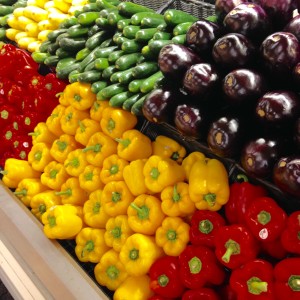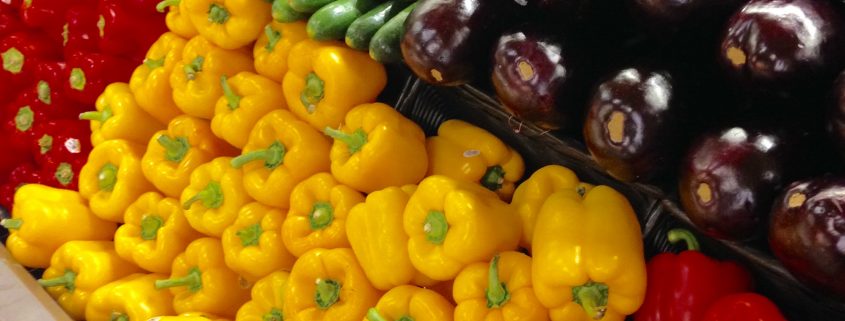Responsibly Grown Produce
 Guest Post by Jackie LiPera, Nutrition Intern
Guest Post by Jackie LiPera, Nutrition Intern
Over the last two decades, new technology has allowed farming practices to evolve immensely. In order to reach the demand of the millions of consumers in the United States alone, farmers must utilize many techniques to optimize water irrigation, waste management and crop yield. New fertilizers, pesticides and gene modifying practices are used every day just to get fruits and vegetables from the farms to your refrigerator.
With all of the new resources available to farmers, consumers are demanding the right to know how their produce was grown. This puts a lot of pressure on farmers to not only supply massive amounts of food but also abide by strict rules in order to please the public.
Regardless, more and more farmers are developing “organic” farming practices that meet the criteria of many standards put forth by the USDA. The term “certified organic” is the only food label that requires a verification process in order to obtain the credentials. Other terms such as “all natural”, “cage-free” and “hormone-free” are not supported by the USDA however, there are no restrictions on who can use them.
In order to prevent food labels from being another marketing scheme, new efforts are being made to make food labels more honest. A new term “responsibly grown” is moving towards credibility by requiring similar standards to certified organic. Though this might seem like a positive movement there is a lot of controversy surrounding this heated topic.
What is Responsibly Grown?
A “responsibly grown” fruit or vegetable at your local supermarket simply means that the item came from a farm that was evaluated based on many different aspects of farming practices. Once the farm is evaluated, produce from a “responsibly grown” farm are then either unrated or given a rating of good, better or best. In order to get a good rating, farming practices must protect air, soil and water. There can be no irradiation, no biosolids, and strict pesticide usage. Although farmers are allowed to use GMO’s, they must be completely transparent about identifying what foods are GMO.
Better ratings include water and energy conservation, protecting rivers and lakes as well as health and safety to farmworkers. The grade can even be increased to best if the farm takes into account things like bee and butterfly protection.
What’s the Difference?
It’s no wonder why mindful shoppers are willing to opt for the responsibly grown label. It encompasses ethical practices for plants, animals and humans alike. It seems ideal however, this label basically already exists. It’s really hard to identify what the difference is between certified organic and responsibly grown. This is making local farmers very angry.
What is the Controversy?
More than 50% of the farms that participate in the responsibly grown program are getting just a good rating. Very few farms have received a rating of better or best. Though the new standards for responsibly grown provide more transparency about how your food is grown, this is putting a lot of stress on small farmers. It’s not easy to have all of the resources to get a higher grade and not to mention, abiding by the highest standards is very expensive.
There is also a lot of heat coming from organic farmers. These farmers are already getting the “certified organic” stamp of approval and therefore are not paying to be part of the responsibly grown program. Organic foods are often placed right next to responsibly grown produce but don’t have a rating so they can be misconstrued as low-grade. This is frustrating for organic farmers because organic is responsibly grown. On-site evaluations for organic farmers to get the responsibly grown label would be costly as well as redundant.
While you’re at the supermarket looking for produce, remember where your food comes from. Everyday farmers work hard to provide the food that you bring home to feed your family. As a consumer, you need to consider loyalty to local farms while still respecting the earth that we live on. While the grocery industry is attempting to make it easier to balance this, there is no question that food labeling has a long way to go.
Your turn to take action: What is your take on “responsibly grown” produce?
References:


Leave a Reply
Want to join the discussion?Feel free to contribute!